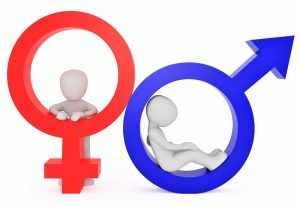Gender roles
Gender roles are cultural and personal. It is these roles that determine how men and women should think, speak, dress and interact within a society's context. These roles are a theoretical construct within the social and human sciences branch that explains social and behavioral norms within a culture or country, appropriate for people depending on sex. It also refers to the image of a person in front of others and in front of society. While several socialization agents such as parents, teachers, peers, films, television, music, books, and religion teach and reinforce gender roles throughout life, parents are likely to exert the greatest influence, especially when their children are young and learning. Learning plays a role in this process of shaping gender roles.
What are gender roles?
Gender roles are the factors that determine how men and women should behave in front of others and within society, vary from country to country, from culture to culture and from sex, and are governed by social and behavioral norms.
Which are the gender roles?
Within today’s societies, there are four different and major gender roles, which are detailed below:
- Personality traits: within these traits “normally” we can find the ones expected by society, women are expected to be complacent, loving and emotional, and men are expected to be masculine, strong, confident, secure and aggressive.
- Domestic behavior: This is greatly influenced by what we know as machismo. Some people expect women to be the only ones to take care of children, to educate them, to prepare food and to function simply as housewives, while, for men, they are expected to be the ones in charge of finances, the car and home repairs.
- Different occupations: In this area, we also observe how the male sex tries to impose itself on the female sex. Women are expected to take on simpler, more feminine jobs, such as teaching and nursing, while those in medicine, administration, engineering or flying are men.
- Physical appearance: Stereotypes in today’s world expect women to be thin and elegant, while men are expected to be tall and muscular. Men and women are also expected to dress and dress according to gender.
Characteristics of gender roles
The role of women was mainly related to the upbringing of children and the role of men is based on work and providing the money needed to live.
Gender roles adopted during childhood, usually continue into adulthood.
They may also change in the same society over time.
Gender stereotypes can cause unequal and unfair treatment because of a person’s gender, known as sexism.
Hyper-femininity may occur in female roles, including exaggeration of stereotyped behavior that is considered as feminine. Hyper-female people exaggerate qualities, and this can include being passive, naïve, sexually inexperienced, weak, and coquettish. Contrary to the previous characteristic we have the hyper masculinity, which implies the exaggeration of the stereotyped behavior that is believed to be masculine. They believe they must compete with other men and dominate female people by being aggressive, worldly, sexually experienced, insensitive, physically imposing, ambitious and demanding.
Origin of gender roles
The term gender role was first coined by John Money in 1955, during the course of his study of intersex individuals, to describe the ways in which these individuals expressed their status as men or women in a situation in which there was no clear biological assignment. The word role is a word that comes from the English word “role“, although its etymological origin is found in the French rôle. The word refers to the function or role of an individual in a given context.
Importance of gender roles
Extreme gender stereotypes are harmful because they do not allow people to fully express themselves or their emotions, and for this reason it is important to look for ways to eradicate them, however, without gender roles, there would be confusion and disorder. Gradual progress has been made in enabling women to work and play important roles in society, but there are still roles that women and men must play.
Examples
Some examples that help us to understand gender roles are the following:
- Pink is for girls and blue is for boys.
- Women are nurses, not doctors.
- Women are not as strong as men.
- Women are supposed to earn less than men.
- The best women are housewives.
- Women don’t need to go to college.
- Women do not play
- Women cannot participate in politics
- All men enjoy working on cars.
- Men can’t be nurses, they’re doctors.
- Men do “dirty jobs” such as construction and mechanics; they are not secretaries, teachers or cosmetologists.
- Men do not do household chores and are not responsible for caring for children.
- Men play video games.
How to cite this article?
Briceño V., Gabriela. (2019). Gender roles. Recovered on 3 January, 2025, de Euston96: https://www.euston96.com/en/gender-roles/










